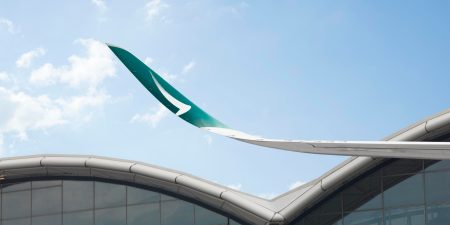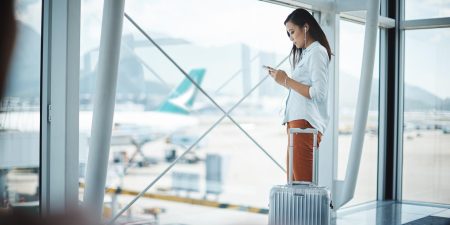
Cathay Pacific marks 40 years of New Zealand connectivity
Hong Kong’s home carrier celebrates anniversary of its inaugural commercial flight to Auckland
Cathay Pacific this week celebrates 40 years since the Hong Kong-based airline first flew into New Zealand.
On 4 May 1983, a Cathay Pacific Boeing 747-200 aircraft touched down in Auckland for the first time, marking the airline’s inaugural commercial flight to New Zealand. The state-of-the-art aircraft, fitted with 35 First Class, 36 Business Class and 337 Economy Class seats, helped to connect millions of Kiwis to the rest of the world.
At the controls of the first flight was New Zealander Captain Ian Steven, then a senior check captain with the airline.
Forty years later, the Hong Kong-Auckland service remains very important to the airline, which currently operates three flights per week on the popular route.
Dominic Perret, Cathay Pacific’s Regional General Manager for Southeast Asia & Southwest Pacific, welcomed the 40-year anniversary and reiterated the airline's commitment to New Zealand.
“This is a significant milestone for us. New Zealand is a market that has played an integral role in our history and remains as important as ever,” says Perret.
“We’re grateful to the many passengers who have flown with us over the past 40 years and for the fantastic working relationship we have with our joint alliance partner, Air New Zealand. Long may it continue.”
Cathay Pacific and Air New Zealand have a relationship that goes right back to 1983. Originally there was also a third operator in the mix, Papua New Guinea flag carrier Air Niugini. The route operated as a tripartite agreement with the three airlines and involved a brief stopover in Port Moresby, the capital of Papua New Guinea, before carrying on to Hong Kong’s famous Kai Tak Airport.
The airport holds a special place in aviation history for its dramatic and challenging approach, with pilots having to navigate sharp turns and high-rise apartment blocks where passengers were able to see directly into residents’ flats. Similar to Wellington or Queenstown airports, clear visibility and gentle winds were essential for a smooth landing. The airport finally closed in 1998 after the build of Chek Lap Kok, what is now known as Hong Kong International Airport, was completed.
“Flying has changed a lot in the past 40 years and certainly for the better, there’s no smoking for one, the cuisine and entertainment offering has vastly improved and overall, the industry is now much more focused on sustainability and fuel efficiency,” says Dennis Basten, New Zealand Area Cargo Manager & Country Lead for Cathay Pacific.
“Gone are the 747s with the old green and white livery, affectionately known as the lettuce leaf sandwich. We are now operating the route with our newer Airbus A350-1000s, one of the quietest and most fuel-efficient aircraft in the world. But what has never changed is our commitment to our customers and ensuring they receive the very best service whilst travelling between New Zealand and our home, Hong Kong.”
Despite the impact of Covid-19, the airline is continuing to enhance its offering and rebuild. As of December 2022, the airline has a fleet of 181 aircraft including its new Airbus A321neos and Airbus A350s, with new Boeing 777-9s due to enter service in a few years.
The company’s latest traffic figures are also showing continued improvement. Figures for March 2023 saw passenger load factor surpass 90%, reflecting the ongoing strong demand for travel. The Cathay Pacific Group, comprising of passenger airlines Cathay Pacific and HK Express, reached 50% of pre-pandemic passenger flight capacity levels as planned, covering more than 70 destinations as of the end of March.
“We are making good progress in increasing our capacity and connectivity at the Hong Kong international aviation hub. Our dedication to helping customers move forward in life, connecting them to people, places and new experiences is reflected in this phase of rebuilding,” added Basten.
“We are incredibly proud of the strong history we share with Auckland and our customers here. We look forward to continuing to connect to and from Aotearoa New Zealand for the next 40 years and beyond.”










